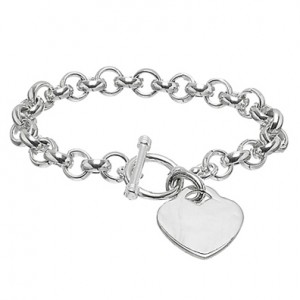While you are shopping the holiday sales, and fighting the crowds, do you ever wonder what it takes to get that merchandise out there? Do you ever wonder how it all happens?
The Holiday Season is a Project
Is the Retail Holiday Season really a project? Think about it. It has a start and stop time. We usually think it starts in October when you start seeing the displays go up in the stores, and it finishes up in early January when you’re done with your returns and using up your gift cards. In reality the Retail Holiday Project starts much sooner. As soon as the January returns season has ended, retailers start looking at the previous seasons lessons learned, and apply those towards the coming year. Typically, product is ordered in the late spring to early summer for delivery by September or October.
At that point, that’s when the real action starts. As stores start receiving their holiday product, they need to translate strategic objectives to daily logistical tasks. Let’s explore how they do this, using an example from my work history.
Some years ago I ran the Inventory Department for a big box retailer who specialized in fancy jewelry in a blue box. My department handled the lower priced but high volume items for the store. We supported the sales floor by keeping inventory accurate and in stock. Preceding the Holiday Season, our department received large shipments of merchandise. One of the items we sold the most of was a silver bracelet with a heart on it.

Alignment with Stakeholders:
In preparation for the Holiday Sales Season, we talked about aligning with the Sales Team’s business goals. In Retail, 25% of the year’s business typically happens in the month between Black Friday and Christmas Eve. Not only does the sales staff increase during that time, but we also needed to look at ways that we could expedite their process, and streamline the Customer’s experience.
In order to make sure we had enough of the right sku’s in stock, so we didn’t lose sales, I kept in close touch with the Sales staff. I asked questions about what seemed to be the hot sellers. I looked at current stock levels for that sku. I made sure that Replenishment Planning already had replacements in the pipeline, and that those replacements would come fast enough.
As time got closer and closer to Christmas Day, it became more and more important to track the responsiveness of the Replenishment process. It wasn’t that the process was broken, but that I wanted to jump in and proactively expedite wherever I could.
Lastly, we wanted to align with the Customer’s Experience. It is commonly known that the sales floor gets flooded with customers during the Holiday Season. Seasonal Staff is hired and trained. Sales floor inventories are fully stocked, and additional space is found for overstock storage.
What we are looking for is to expedite the process between the time the customer says they’ll buy an item to the time it is in their hands. That window of time, called the Cash Wrap process, needed to shorten. In PM speak, we needed to Crash the Cash Wrap! This needed to happen not only for the sales person to move on to their next customer, but also so the customer can move on with their own day. We needed to be efficient, so we could also allow the Customer to be efficient in their own day as well.
Creating Customer Service through the PreWrap program:
Normally, the sales staff wraps each item as they sell it. But during the holiday season, the volume of transactions is so high that this becomes a critical path item, one which slows the Sales Process flow.
One of the ways that the Inventory Department was able to help the Sales floor expedite the Cash Wrap process, and keep the flow of customers moving, was to implement what is known as the Pre-Wrap program. Since my department handled the highest volume sku’s in the store, we knew that it would greatly help the salespeople to finish quickly if they didn’t have to wrap these sku’s themselves. We knew that if we picked the top 10 selling sku’s, and wrapped them for them, we’d help to expedite both the sales process, and improve the customer’s experience.
Deciding which sku’s to PreWrap, and how many?
Luckily, in a company that size, we had the benefit of previous year’s sales figures by sku, and forecasted sales trends by sku. Early in October, I reviewed these lists of sku’s , keeping in mind our store’s customer base and current trends, and made decisions on which sku’s to focus on for the PreWrap program. (I have to stress, however, that even in a smaller company without benefit of extensive Business Intelligence tools, it’s imperative you know which items are your hot sellers, so you can make strategic decisions at the store level.)
I looked at sales volume for each sku, and planned on how many supplies to make sure to have on hand, I made room in the stockroom and on the sales floor to store quantities of the prewrapped items, and I made Checklists for each sku as it moved through the PreWrap process.

That PreWrap Checklist was my bible throughout that all important selling month. Every morning before the store opened, I went over it to see which inventory bins on the sales floor needed filling with how many units. After replenishing the sales floor, I used the Checklist to see which of my stockroom bins needed to be replenished. From there, more items were PreWrapped and the cycle went on.
PreWrapping the Top Ten sku’s:
During the selling day, the Inventory team and the Shipping team worked together to make sure that there were enough boxes, bags and ribbon in stock to support the PreWrap program. Both departments participated in PreWrapping the Top 10 skus. Using my PreWrap Checklist, I made sure that enough quantities of each of the sku’s were wrapped each day. Following exact Presentation Standards we all pitched in, tying perfect bows on each box.
Once we had wrapped the items, we had to store them, by sku, in a segregated but convenient area. Through the resourcefulness of one of my staff, the strong cartons used to ship merchandise to us, were reshaped, reinforced, labeled, and repurposed as PreWrap bins. As the items were wrapped, into the PreWrap bins they went, waiting to fulfill their destiny on the sales floor!
With the use of a rolling cage, we staged certain quantities to push up to the sales floor for the next morning. On the sales floor, any space that was available, or wasn’t actively being used, was repurposed as PreWrap overflow. Besides their normal stock bins, the salespeople had PreWrapped merchandise on the floor, within reach, throughout the Holiday Season.
Timing is everything:
Timing was really important to the PreWrap program. In early October, I chose which sku’s to include in the PreWrap program. By end of October, we had created room on the Sales floor for their PreWrap overflow areas, and we set aside room in the stockroom for supporting PreWrap inventory. As soon as we had these areas set up, and I had my PreWrap Checklist set up, I started using this tool to direct the quantities of each sku to be wrapped each day. I knew how many of each sku sold the previous year, so I knew how many to expect to wrap ahead of time. Our best selling sku sold 2000 units in one month!! With volumes like that, you know I had to keep my finger on the pulse!
By mid-November, we were ready for the Holiday sales to begin! We had quantities of the best selling sku’s PreWrapped and stocked both in the stock room and on the sales floor.
As the Holiday season got into full swing, we got into a routine, based upon my handy PreWrap Checklist. In the late afternoons, I’d review quantities of PreWrap on the sales floor. I’d return to the stockroom, and pull replenishment quantities from the PreWrap bins, and stage them on the rolling cage. In the mornings, before the store opened, we took that cage up to the sales floor and filled all the PreWrap overflow areas. The sales people were set up for their days!
Using the PreWrap Checklist functioned similarly to a daily scrum meeting. By talking with my team about the quantities actually sold, the quantities we needed to wrap, and which sku’s were selling faster or slower than expected, we all kept on top of the stock levels of these all important top sellers. 
Anticipating the End of the Season:
As the season started winding down, we stopped PreWrapping so many of the top selling sku’s. Several days before Christmas, we tapered off on the lesser selling of the PreWrapped sku’s. If a sku hadn’t needed replenishing in some days, we stopped PreWrapping it. On Christmas Eve, we stopped PreWrapping our number one selling sku.
Now, we still had PreWrap quantities floating around even after Christmas day, and that was OK. It wasn’t worth putting any man-hours into unwrapping them. Sales were still brisk with customers coming in to spend their Christmas cash. By middle to end of January, we usually didn’t have much PreWrap left. We were back to “normal”.
Why do it all?
So this is quite a process that we had to do, and it was in addition to the increased demands placed on us by the fact that it was the busy holiday season. But the fact of the matter is, that by providing this service to our internal customers, the sales staff, we were also able to directly affect the quality if our external customers’ experience as well!
We sped up the Cash Wrap process for both the sales person and the customer. We helped avoid lost sales due to stock outages. We helped increase sales/unit by pushing quantities up to the sales floor. You know sales staff would rather sell something they didn’t have to wrap! And we created Process Improvement lessons that carried forward. Most importantly, despite the crowds, we contributed to the Customer Experience!
So next time you’re in a busy Retail store, and wondering about how it all happens…. Just remember that behind every great salesperson, is an Inventory Elf making it all happen!



